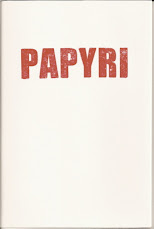1973:
Pablo Picasso produced several drawings in both pen-and-ink and colour three months after his death. Or perhaps it would be more accurate to say that Picasso-style drawings were transmitted through British psychic Matthew Manning, who had been trying to ‘get through’ to Picasso. While concentrating on this he had found his hand being controlled – apparently by the spirit of Picasso, or whatever signed itself “Picasso” on the drawing.
– Lynn Picknett, “A Gallery of Psychic Art.”
Life After Death (London: Orbis, 1984): 144.
Drawings are quicker and easier to judge than musical compositions. Anyone who glances through Matthew Manning’s portfolio of paintings and drawings in the style of Beardsley, Dürer, Klee, Toulouse Lautrec and Leonardo da Vinci will be struck by their remarkable resemblance to those artist’s styles. An air of crude pastiche might seem equally marked in most of them.
It is insufficient, however, simply to call them fakes. Matthew produces them with such uncanny speed, and with so little preparation (no preliminary sketching, no measurement of the paper), that they exceed the drafting abilities of most artists.
Is this the same thing as what is generally called “inspiration” – the divine afflatus – a visit from the Muse? Clearly not. These works purport to be by dead artists. They are communicated through someone of limited artistic talent, who does not claim them as his own work. Their quality is both impressive and disappointing. Impressive if we see them as compositions by frustrated housewife Rosemary Brown or troubled teenager Matthew Manning; disappointing if we compare them to the real work of Beethoven, Toulouse Lautrec et al.
The mind has hidden depths. Neurologists tell us that literally everything that happens to us is recorded there (like Madame Blavatsky’s Akashic Records, repositories of all the knowledge in the world – or, for that matter, Jung’s collective unconscious). The tiniest percentage of this is available to the conscious mind, but we know that much more can be recovered under hypnosis.
Few artists would claim complete control of their creative processes. If you know what you’re going to say next, if it all comes from your conscious mind, then it’s rhetoric, not art. You must, in some sense, be able to stand back and watch yourself at work, to feel surprised by what comes out next.
It doesn’t really matter which model you adopt to explain this process. Blake, like Manning and Brown, would see it as dictation from a higher sphere. Others have postulated a superior, transcendent self somehow resident within us. I feel that there’s a kind of statute of limitations preventing too close enquiry into these mysteries. One thing’s for certain. Ursula Le Guin put it best: “The counsel of the dead is not profitable to the living.”[1]1. Ursula K. Le Guin, The Farthest Shore. 1973 (Harmondsworth: Puffin Books, 1975): 85.
Poems, Imitations & Translations
Monday
Case Studies (4):
Subscribe to:
Post Comments (Atom)








.jpg)
No comments:
Post a Comment